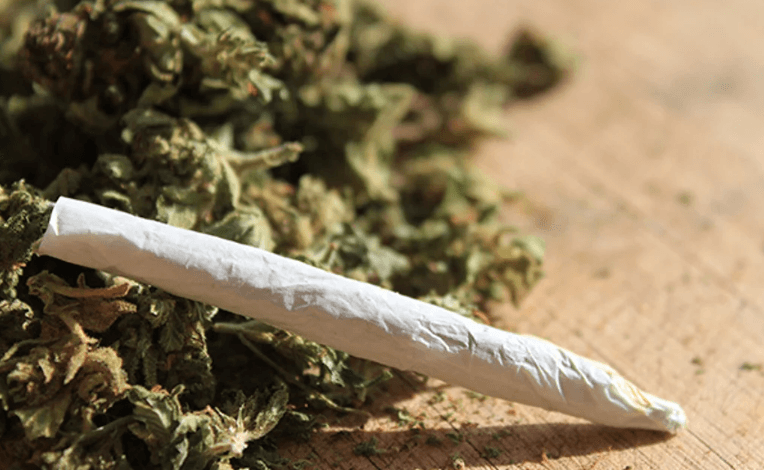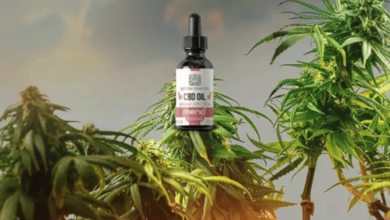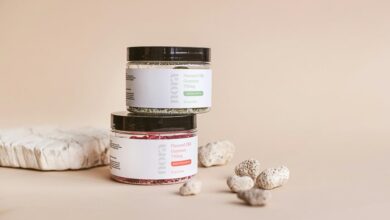Does Cbd Smell Like Weed

The aromatic profiles of CBD and traditional cannabis often lead to questions regarding their olfactory similarities. While cannabis is renowned for its potent, earthy scent attributed to a complex array of terpenes, CBD products frequently exhibit milder, less pronounced odors. This distinction is crucial for consumers seeking the therapeutic benefits of CBD without the strong cannabis aroma. Understanding the factors that influence these scent differences, including extraction methods and terpene presence, can illuminate why many prefer one over the other. What implications do these differences have for consumer choice and societal perceptions?
Understanding CBD and THC
Understanding the distinct properties and effects of CBD (cannabidiol) and THC (tetrahydrocannabinol) is essential for navigating the complexities of cannabis and its derivatives.
While CBD benefits include anxiety relief and anti-inflammatory properties, THC effects can lead to euphoria and altered perception.
Recognizing these differences empowers individuals to make informed choices about their cannabis use, fostering a sense of autonomy and well-being.
See also: Discover the benefits of hemp living
The Scent of Cannabis
The scent of cannabis is primarily influenced by its unique chemical composition, particularly the presence of terpenes, which contribute to its distinctive aroma.
Understanding how these compounds differ between CBD and THC can help clarify any misconceptions regarding their respective scents.
Chemical Composition Comparison
Cannabis emits a distinctive aroma largely due to its complex chemical composition, which includes various terpenes and cannabinoids that contribute to both its scent and effects.
In contrast, CBD extraction processes often lead to a subtler odor perception, reflecting the absence of certain aromatic compounds found in traditional cannabis.
This difference highlights the nuanced relationship between chemical makeup and the sensory experience of cannabis products.
Terpene Influence on Aroma
Numerous terpenes present in cannabis play a crucial role in shaping its distinctive aroma, with each compound contributing unique scent profiles that can range from earthy and herbal to fruity and citrusy.
The remarkable terpene diversity within cannabis enhances its aroma profiles, influencing consumer experiences.
Understanding these aromatic compounds not only enriches appreciation for cannabis but also informs personal preferences in selection and use.
Distinguishing CBD From THC
Distinguishing between CBD and THC often hinges on their respective scents, as both compounds emanate different aromatic profiles that are influenced by their unique chemical compositions.
CBD misconceptions often arise from its association with cannabis, despite its non-intoxicating nature.
Conversely, THC’s potent aroma can lead to legal concerns regarding THC legality, shaping public perceptions and influencing consumer choices in the evolving cannabis market.
Chemical Composition Differences
The chemical composition of CBD differs significantly from that of THC-rich cannabis, resulting in distinct olfactory profiles that can influence perceptions of smell and overall experience.
CBD extraction methods often preserve specific terpenes, which contribute to its unique scent.
This divergence in chemical makeup not only alters odor perception but also enhances the appeal of CBD for those seeking a non-intoxicating alternative to traditional cannabis.
Factors Influencing CBD Smell
Several factors contribute to the distinctive smell of CBD, including its source, extraction methods, and the specific terpenes that are preserved during processing.
CBD extraction techniques, such as CO2 or ethanol methods, can significantly influence the final aroma.
Additionally, individual variations in odor perception among consumers may further shape their experiences, leading to diverse interpretations of CBD’s scent profile compared to traditional cannabis.
Comparing CBD and Marijuana Aromas
CBD and marijuana, while derived from the same plant species, exhibit distinct aromatic profiles largely due to varying concentrations of terpenes and cannabinoids in their respective formulations.
CBD extraction processes often focus on isolating specific compounds, leading to milder aromas.
In contrast, marijuana’s aroma perception is characterized by a robust, earthy scent, influenced by its diverse terpene content, creating a stark olfactory difference.
The Role of Terpenes
Understanding the role of terpenes is vital to comprehending the distinct aromatic differences between CBD and marijuana. These organic compounds significantly influence the scent profiles and potential therapeutic effects of cannabis products.
Terpene diversity contributes to aroma classification, allowing consumers to identify specific strains and their unique properties. This knowledge empowers users to explore the aromatic landscape of cannabis with greater awareness and intention.
Choosing Low-Odor CBD Products
When selecting low-odor CBD products, it is essential to understand the various odor profiles associated with different formulations.
Options such as CBD isolates and broad-spectrum products typically emit less aroma than full-spectrum varieties.
Additionally, employing tips for discreet use can enhance the experience for those seeking to minimize their scent while enjoying the benefits of CBD.
Understanding CBD Odor Profiles
The odor profiles of CBD products can vary significantly, leading consumers to seek options that minimize the characteristic scent often associated with cannabis.
Factors such as the CBD extraction method and the strain used influence odor perception.
Products derived from isolates generally emit fewer odors, appealing to those who prefer a discreet experience while still enjoying the benefits of CBD without the pungency of traditional cannabis.
Types of Low-Odor Products
For consumers seeking the benefits of CBD without the distinctive cannabis aroma, several low-odor product options are available that cater to varying preferences and needs.
Low odor tinctures provide a discreet method of consumption, while odorless capsules offer a convenient, flavorless alternative.
These products enable users to enjoy the therapeutic effects of CBD without attracting unwanted attention or concern about scent.
Tips for Discreet Use
Choosing low-odor CBD products is often essential for individuals who wish to maintain discretion while enjoying the therapeutic benefits of cannabidiol.
For effective discreet consumption, consider options such as capsules, tinctures, or edibles that utilize odor masking techniques.
These products minimize scent, allowing users to engage with CBD in various settings without drawing attention, thus promoting a sense of freedom and comfort.
Conclusion
In summary, CBD generally does not emit the strong, earthy aroma characteristic of marijuana, largely due to differences in chemical composition and the presence of specific terpenes.
This distinction is significant, particularly as the global CBD market is projected to reach USD 47.22 billion by 2028, reflecting growing consumer preference for discreet consumption options.
Understanding these nuances not only enhances appreciation for CBD products but also informs choices aligned with personal preferences and therapeutic needs.



